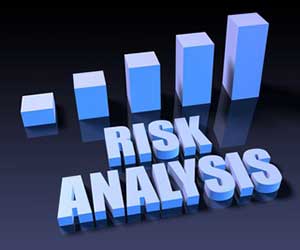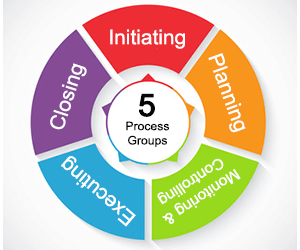Guide to Agile Project Management
In case you haven't noticed, agile is the new buzzword in project management. That's because it speeds up project completion times, increases customer satisfaction, and decreases project costs. Agile started in software development but it's spreading to other industries. It's truly the new way to do project management. But what....
How to Create a Risk Response Plan
Project risk management is what separates good project managers from great ones. Even when everything has been planned and executed to perfection, an unexpected event can cause considerable duress on the project stakeholders and even cause the project to be considered a failure. Risk management is a three step process: Risk Identification....
Project Risk Analysis – Example
Because you can't see its results in a direct way, project risk analysis is too often sacrificed by project managers in the name of time or budget constraints. Compounding the problem is that small projects just don't seem to have the time and budget to justify the time spent on risk management.....
How to Identify Project Risk
The first step in a good risk management plan is the identification of risks. The other phases of project risk management are built on this foundation. It involves developing a list of the potential risks to a project, which is called a Risk Register. A good risk register might have the....
Project Planning
Planning is the single most important thing a project manager can do to ensure a successful project that meets its goals. The Project Management Institute suggests that planning should ideally consist of about 20 – 30% of the time required to perform the project work. This is substantially more than....
The Five PMBOK Process Groups
The foundation for project management theory is called process groups. Although relegated to one of many project 'models' in the PMBOK version 7, it is a well established sequence of events which guides the project life cycle as a whole, as well as each iteration within the project. They are....
Guide to Project Management
Managing projects is like steering a ship. When the wind or sea conditions are rough, experienced helmsman use their keen sense of how the ship will react to keep it moving in the right direction. Because the ship doesn't react right away, the helmsman must anticipate the delay between turning....
4 Core Parts of a Quality Management Plan
Everybody has stories of quality problems and the anxiety they cause. The assembly line is down, or a customer complained about the product, or the report missed an important element, in that moment the only thing that matters is that someone didn't achieve the quality expectations. Believe it or not,....
What is a Project Deliverable?
A Project Deliverable is a product or service that a project produces for its customer, client, or project sponsor. It is the product or service that the project "delivers" to its stakeholders. It can be tangible or intangible, for example, a contractor who is hired to provide a training course....
Parts of a Risk Management Plan
Above all else a project manager is a leader, therefore developing leadership skills is one of the best ways for a project manager to further their career. To that end, one of the most important traits of a leader is the ability to react swiftly and decisively when unexpected events occur. Project risk....










